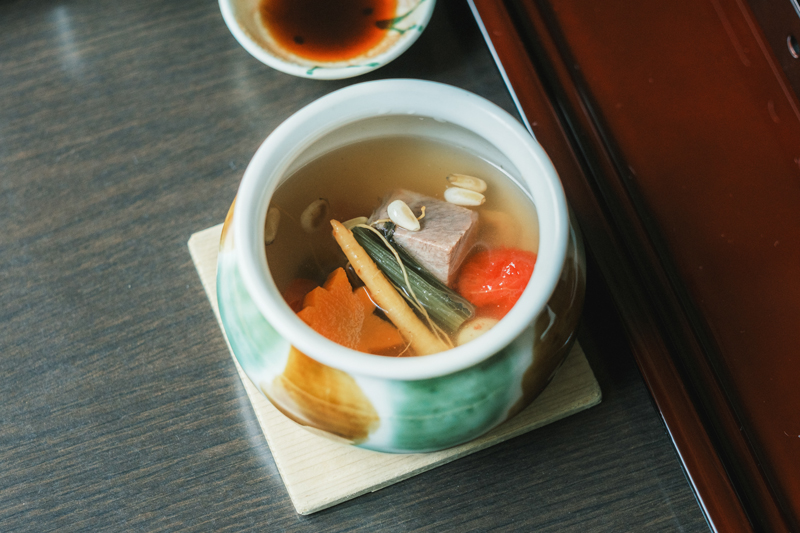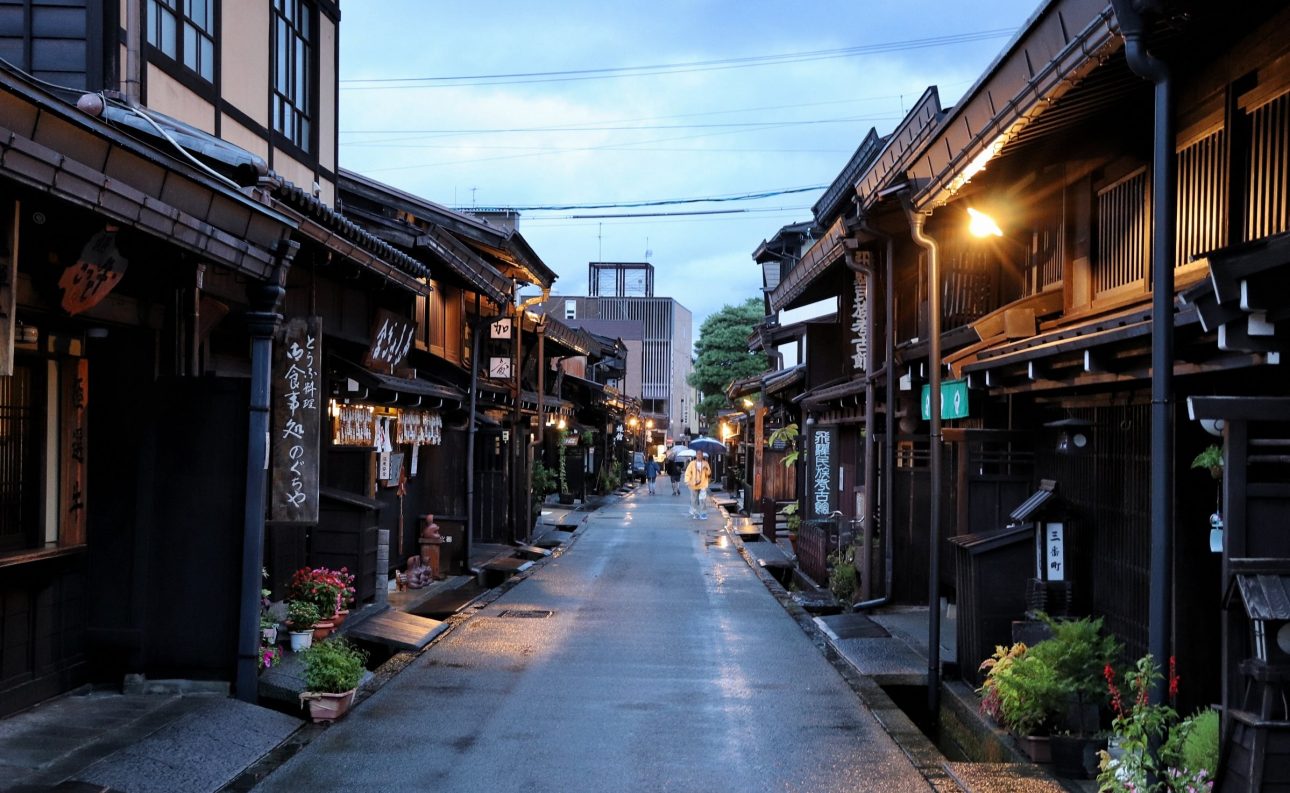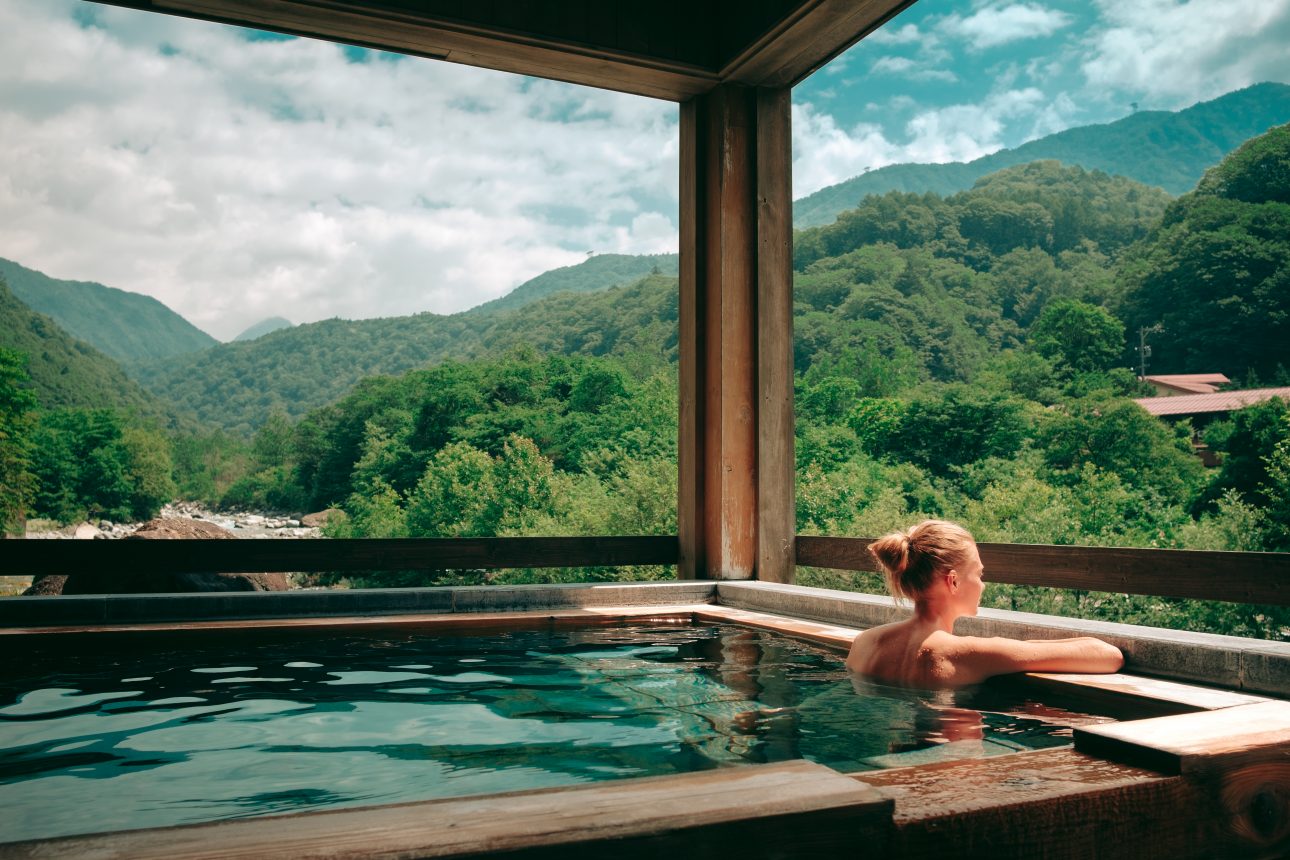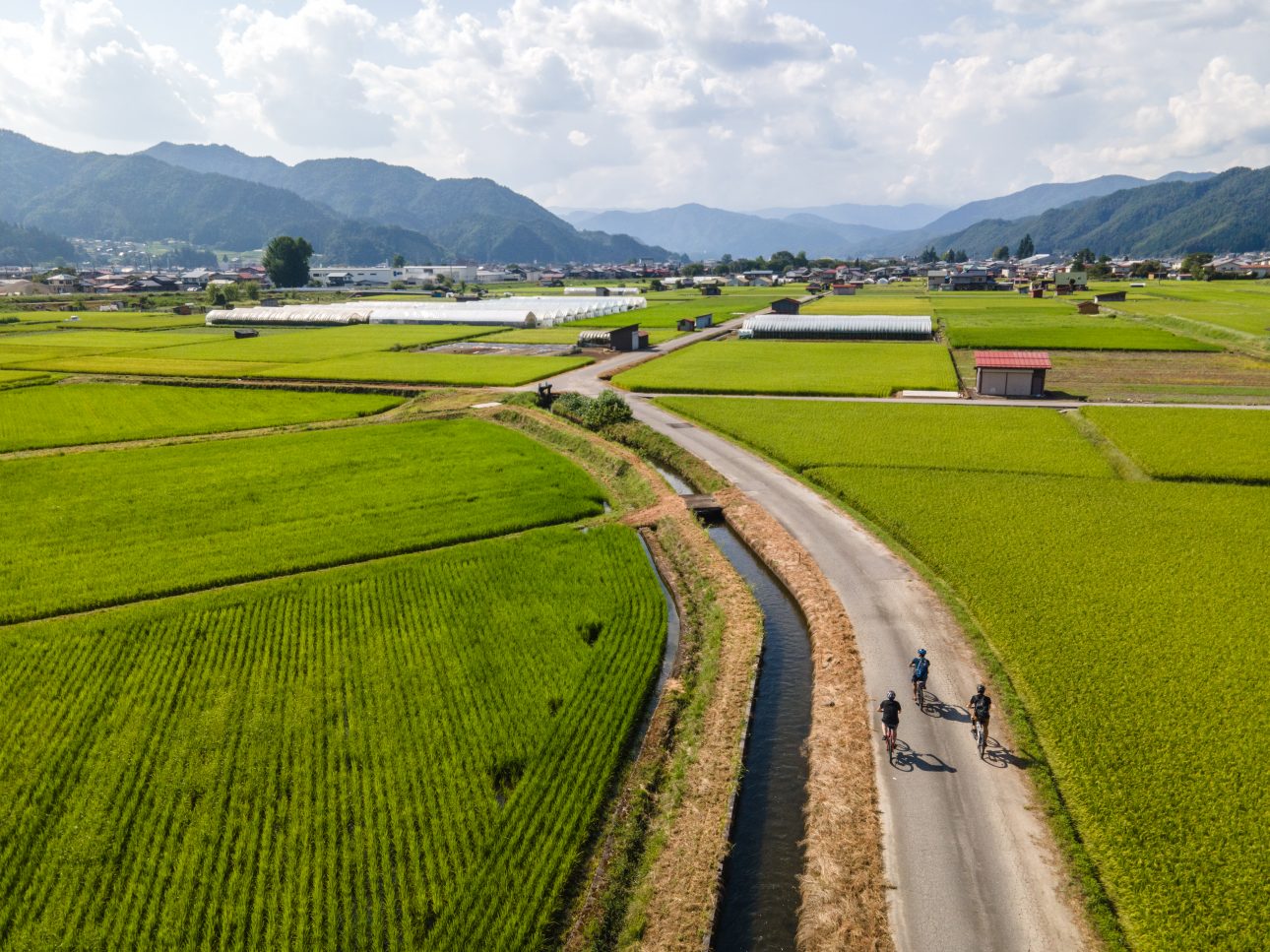Discovering local flavors is one of the greatest joys of travel. Our increasingly hectic lifestyles have heightened our desire for food that tastes great and adds to our wellness – Japan is one of the best places in the world for discovering cuisines like this.
Japanese dishes are renowned internationally for their health benefits and use of natural, seasonal ingredients. In Gifu Prefecture, health-conscious, balanced cuisine has been taken a step further. Chefs here ingeniously incorporate local medicinal herbs into their dishes, crafting delicious meals that nourish the body and soul.
This article highlights Gifu’s traditional medicinal and herbal cuisine in Hida-Furukawa and Gifu City. Both destinations offer unique experiences for travelers seeking wellness and deeper insights into Japanese culture.
Herbal Cuisine at Busuitei OHAKO in Hida-Furukawa
Hida-Furukawa is globally acclaimed for its spectacular Furukawa Festival held in spring, which features ornate wooden floats. This community-wide event is registered as a UNESCO Intangible Cultural Heritage and draws visitors from across Japan and the world. Hida’s well-preserved traditional architecture is also famous. Old, traditional storehouses line the Seto River, which once divided the samurai and merchant districts during the Edo period, offering a glimpse into the past. Hida-Furukawa’s temples and historic residences further enhance the atmosphere, transporting visitors back in time.
What is less known about Hida is that 93% of the region is covered in lush woodlands of broad-leaved trees. The forest floor, enriched by fallen leaves, nurtures a diverse range of small plants, many of which have been used for medicinal purposes since ancient times.
Research conducted by Professor Kotaro Murakami from Kyushu University, in collaboration with the former Furukawa Town Hall, has identified and categorized approximately 245 medicinal herbs within the Hida region. Some of these herbs can be found at local markets, where they are sold after being harvested from the forests, dried, and packaged by residents. The herbs can be enjoyed by brewing them into tea, and some people even cultivate these herbs in their own gardens.
Wanting to offer a unique dining experience centered around these herbs, Busuitei OHAKO opened in 2019.
The owner’s family runs Busuitei, a well-known local ryokan. Many of the ryokan’s guests return regularly to indulge in its exquisite multi-course medicinal herb-infused meals.
Inspired by the popularity of the medicinal herb courses at Busuitei, the owner developed a casual lunch menu featuring herbal dishes. This cafe-style lunch draws repeat customers who come specifically to Busuitei OHAKO for this unique culinary experience.
The centerpiece of the Medicinal Herb Lunch Plate is a mouthwatering hamburger patty seasoned with medicinal herbs and served with a vegetable sauce. The burger’s delicate flavor, rich aroma, and juicy texture are a delightful surprise. The meal is perfectly complemented by fragrant unpolished brown rice, rich with fiber and vitamins that aid digestion.

The vegetable tempura, served with a jelly-like sauce, offers a unique taste experience. The salty-sweet sauce is deep in flavor yet refreshing, evoking the image and smell of a forest. This same intriguing flavor profile is also present in the sponge cake dessert.

The unique flavor comes from menamomi (Sigesbeckia pubescens), a plant that thrives in the shade of large forest trees. This member of the Asteraceae family, related to chrysanthemums and daisies, grows in the mountains and fields of Japan. As a result of initiatives undertaken by Hida City, the use of menamomi has become increasingly popular. Local residents often mix it with honey and add it to milk or yogurt. It is believed to help prevent colds, boils, stroke, arteriosclerosis, and cerebral hemorrhage, as well as in relieving numbness in the hands and feet.

The salad dressing and potato side dish flavored with yuzu citrus also incorporate medicinal herbs. The soup that accompanies the meal is a harmonious blend of nine different herbs, creating a stimulating and flavorful broth.
While enjoying the lunch plate, you can feel the careful consideration of each small detail, from the main dish to the side dishes and dessert. This thoughtfully crafted meal introduces visitors to the natural bounty of the region and leaves a lasting impression. As you savor each bite, you will feel a gentle warmth spreading through your body, invigorating you to further explore Hida’s nature and rich cultural heritage.
Busuitei OHAKO is located in a renovated traditional house near the city center. The warm, wooden interior decorated with picture books, family photos, and musical mementos reflects the distinctive personality of its owner, who was once a professional opera singer.

Herbal Tea Ceremony in Hida
Hida’s deep-rooted tradition of herbal medicine has fostered a thriving industry, encompassing local products, activities, and events centered around herbalism. Just a short walk from Busuitei OHAKO, you’ll find Hida Mori no Megumi, a facility dedicated to showcasing the wonders of medicinal herbs. Opened in 2019, this unique establishment is one of the few of its kind in Japan, offering visitors a comprehensive introduction to the world of medicinal herbs.
Hida Mori no Megumi sells medicinal herb products, hosts workshops and activities related to herbalism, and provides herb processing services such as drying, grinding, and juicing.
On the first floor, visitors can explore a diverse range of herb products, including tea blends, candy, and seasonings that make ideal souvenirs from Hida. The second floor houses an exhibition room and library, where visitors can delve deeper into the world of herbal plants. The facility also boasts an inner garden filled with potted herbs, allowing visitors to examine these plants up close and learn to recognize them in their natural habitats.
Hida Mori no Megumi also hosts a variety of workshops, including herbal bath salt, seasoning, incense and fragrance, moss ball, and washi postcard making, highlighting the versatility of herbal plants. The herbal tea ceremony in particular is highly recommended. During this 40-minute experience, you’ll blend herbs to suit your own physical and mental state at that very moment, creating a personalized blend of herbs that is one of a kind in the world. (*Please note that advance reservations are required for this activity.)

The tea ceremony instructor begins by explaining the history of herbal medicine in Hida, highlighting the region’s abundant woodlands. They also mention how Hida residents have traditionally incorporated medicinal herbs into their daily lives, from herbal infusions to culinary applications.
Participants will also be presented with twelve jars of herbal plants of them. The instructor will explain about each plant, highlighting their characteristics. These plants include Hida herbs like menamomi, the fragrant kuromoji (Lindera umbellata), mugwort (yomogi), Chinese lizard tail (dokudami), field horsetail (sugina), Korean mulberry (kuwa), and others.

The twelve herbs are carefully selected based on their flavor and ease of consumption as a herbal drink. Plants with bitter tastes or those requiring complex processing are excluded. However, upon request, the instructor will open specific jars to allow you to experience the fragrance of the plants that intrigue you.
Before selecting the herbs for your blend, you will go through a process of introspection, taking a moment to examine your current mental and physical state. You’ll then select four jars and take a spoonful from each, placing them into a paper filter. Pour hot water over the blend, and after three minutes, your unique herbal infusion will be ready to be enjoyed. The soothing aroma of the warm herbal tea is deeply relaxing, and the lesson on Hida’s local flora is fascinating.
If you’re inspired to recreate your herbal tea blend at home, you can purchase 10-gram packages of the herbs directly from the shelves at Hida Mori no Megumi. It’s important to remember, however, that medicinal herbs are not intended to cure diseases. Instead, they help support the body’s natural functions through their mineral content. The herbal experts at Hida Mori no Megumi are committed to dispelling misinformation about healing plants and ensuring that visitors understand their true purpose.
Busuitei OHAKO and Hida Mori no Megumi are located within a five-minute walk from the Hida Furukawa Festival Exhibition Hall, Festival Square, and Enkoji Temple. After exploring the historic Town of White-Walled Storehouses along the Seto River, enjoy a relaxing time along with delicious Hida cuisine. To further enhance your wellness journey, consider staying at a hot spring inn in nearby Okuhida Onsen-go, located along the route to Takayama.
Medicinal Herb Cuisine in Gifu City’s Nagaragawa Onsen Area
Gifu City has a unique history of medicinal herbs, deeply intertwined with Mount Ibuki, a 1,377-meter peak straddling the border between Ibigawa in Gifu Prefecture and Maibara in Shiga Prefecture. Since medieval times, the region surrounding Mount Ibuki, particularly the area that was once the village of Kasuga, has been home to a variety of medicinal plants used for healing.
Inspired by exchanges with Portuguese missionaries, including Luis Frois (1532-1597), warlord Oda Nobunaga (1534-1582) established a medicinal herb garden on Mount Ibuki. After seizing Gifu Castle in 1567, Nobunaga resided there for nearly a decade, using it as a base to unify Japan.
The herb garden on Mount Ibuki fell into disrepair after the 16th century. Historical records from the Edo period suggest that around 3,000 types of medicinal herbs, including many introduced from Europe, were cultivated there. While the exact number remains debated, the presence of certain non-native plant species on Mount Ibuki today proves that it was once a thriving center of medicinal plant cultivation.
Gifu’s rich abundance of medicinal herbs and its long-standing herbal traditions played a significant role in the establishment of a college of pharmacy in Gifu City. Additionally, it inspired the development of Mino yakuzen, a unique culinary style that utilizes medicinal herbs in local dishes.
Visitors to Gifu City can savor the exquisite flavors of Mino yakuzen cuisine at the Japanese Restaurant Kissho, located inside the prestigious Gifu Grand Hotel. For three decades, Kissho has been delighting diners with its innovative Mino yakuzen menu, which requires special certifications to prepare and serve to diners. The chefs at Kissho have earned their Mino yakuzen license under the guidance of medicinal herb specialists affiliated with Gifu Pharmaceutical University.
The Mino yakuzen menu is a luxurious culinary journey that showcases the best of seasonal flavors and colors. Each course, from the appetizer to the dessert, is beautifully presented. The meal typically begins with an aperitif and an appetizer dish, followed by a clear soup, tsukuri (sashimi with seasonal side dishes), the main dish, a grilled dish, a lidded dish, rice, pickles, and a delightful dessert.

The hotel’s head chef told us about the three fundamental principles of Mino yakuzen cuisine. Firstly, the dishes must incorporate medicinal herbs. Secondly, the majority of ingredients must be sourced locally from Gifu Prefecture, historically known as Mino. Lastly, the cuisine should be accompanied by an explanation.
To illustrate this, chefs present diners a tray showcasing some of the medicinal herbs and ingredients, including ginseng, pine nuts, lotus seeds, cloud ear mushrooms, cassia bark, and herb-infused soy sauce.
Even the small glass of liqueur served as an aperitif is a complex blend of 16 different herbs, its pleasant aroma stimulating the appetite. This aromatic beverage is accompanied by beautifully arranged seasonal dishes, reminiscent of a jewelry box.
The subsequent clear soup is a delicacy for which the hotel is renowned: Mino yakuzen Hida beef soup. Infused with herbs like ginseng, pine and lotus seeds, and organic cloud ear mushrooms, this soup soothes the body with its gentle flavor.
The main course, Hida beef shabu-shabu, is an exceptional experience featuring premium Hida beef and an herbal blend soup. This unique combination elevates the traditional shabu-shabu experience, offering a flavor profile unlike any other.
The ayu (sweetfish) served as grilled dish is a famous local product from the Nagaragawa River region in Gifu. Though typically caught in summer, locals have developed methods to preserve the fish, allowing it to be enjoyed even during colder months.
The Mino yakuzen course at Kissho offers diners a chance to experience Gifu’s culinary heritage and its deep-rooted traditions of medicinal herbs. From the appetizer to the dessert, each dish is crafted to nourish the body and promote overall well-being.
For an added wellness boost, consider staying overnight at Nagaragawa Onsen and indulging in the rejuvenating benefits of hot spring baths, complemented by the healing properties of medicinal herb cuisine.
Gifu Grand Hotel is conveniently located near Kawaramachi, a historic riverside port district dating back to the era of Oda Nobunaga’s rule. This charming area is directly across the street from Gifu Park, where you can board the ropeway to ascend Mount Kinka and visit Gifu Castle.

Savor Gifu’s Medicinal Herb Cuisine
Gifu City and Hida-Furukawa are ideal destinations for travelers prioritizing well-being. The local practice of harnessing nature’s healing powers and incorporating medicinal herbs into cuisine has resulted in dishes that are visually appealing, delicious, and full of nutritional benefits.
Be sure to take the next opportunity to add Gifu’s medicinal herb cuisine to your itinerary when you enjoy the prefecture’s breathtaking natural landscapes, rich history, and rejuvenating hot springs.



























飛騨市観光協会-1290x1209.jpg)







